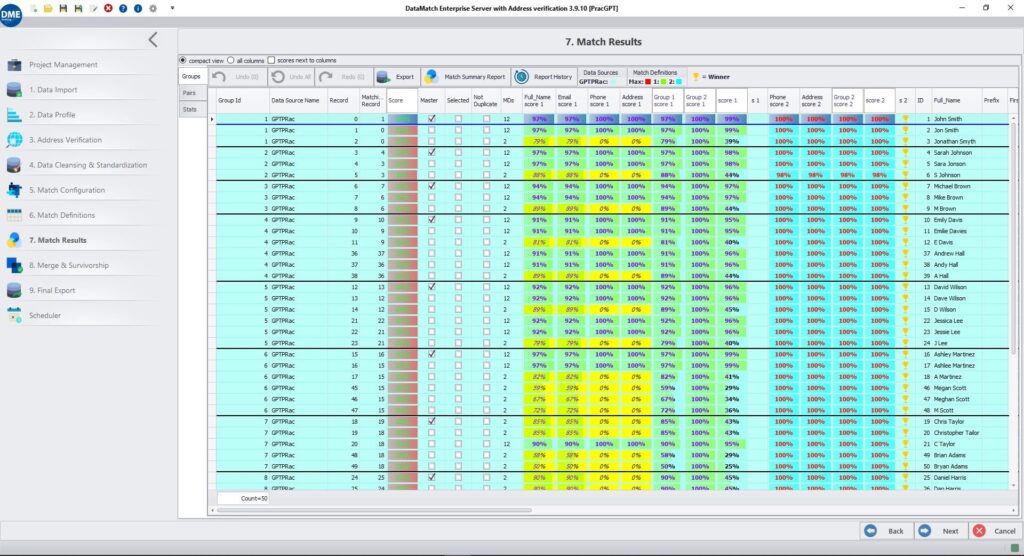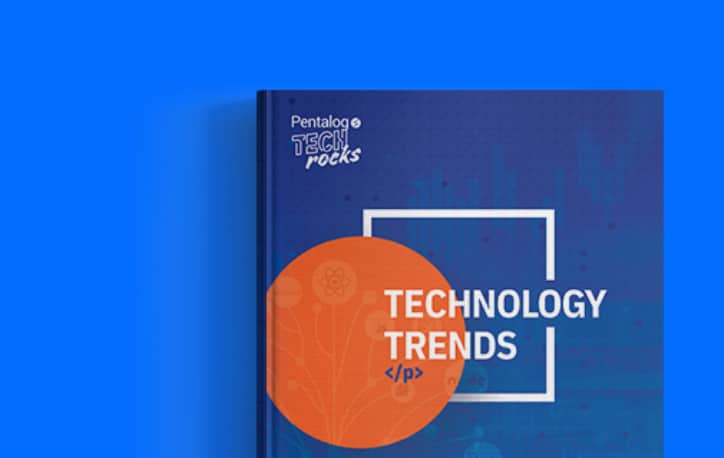When customer records, product SKU data, supplier/vendor details, etc. are scattered across dozens of disparate systems, employees lose an average of more than a quarter of their workday just hunting for the right information to do their jobs. This not only affects their own performance but also brings productivity across the organization down by 24%.
That’s why businesses feel more pressure than ever to create a reliable, unified view of their data.
IBM Match 360 is one of the better-known solutions in this space, but it’s far from the only one. Depending on your priorities, such as speed, governance, flexibility, or cost, other platforms might be a stronger fit.
This piece is a full walk through of ten IBM Match 360 alternatives that senior data leaders often evaluate. The goal isn’t to crown a single winner, but to give you a clear picture of the landscape so you can choose what works best in your business context.
What is IBM Match 360 (What It Does and Where It Fits)
Before discussing alternatives, a quick refresher on Match 360 helps set up the comparison baseline.
IBM Match 360 is part of IBM Cloud Pak for Data suite, and its core job is to help organizations bring together messy, scattered records into a single view. It applies machine learning, rules, and confidence scoring to figure out which records belong together, and which don’t.
Match 360 supports multi-domain use cases, including customers, households, products, and even external data sources, and it comes with governance and stewardship features that satisfy the needs of highly regulated enterprises.
The strength of Match 360 lies in its scale and the broader IBM ecosystem it plugs into. If you already run on IBM’s data fabric, it slots in neatly. But it’s not always the fastest route to value. The setup can be complex, and teams sometimes need more resources to configure and maintain it than they expect. That’s why many leaders start looking for alternatives to IBM Match 360, not because it isn’t capable, but because they want something that matches their size, speed, use cases, or budget more closely.
Criteria for Evaluating IBM Match 360 Alternatives
To be fair and clear in my comparison, here are the dimensions I use when comparing tools in enterprise settings:
| Criterion | Why It Matters |
| Time to first value / deployment speed | Projects stall if setup is too slow. Senior leaders need to see ROI early. |
| Matching accuracy + configurability | Different data types; you need to tune matching logic. |
| Scalability & source-agnostic ingestion | Many systems, many data shapes, many domains. |
| Governance, audit, human-in-the-loop review | For compliance, data trust, stakeholder buy-in. |
| Cost / licensing flexibility | Not just sticker price — TCO (maintenance, staff, change). |
| Ease of use, especially for non-technical stewards | Better adoption, lower internal friction. |
| Integration capabilities / APIs | To plug into existing stack, BI, downstream apps, etc. |
Top 10 Alternatives to IBM Match 360
There’s no shortage of tools in this space, we all know that, but here are ten strong IBM Match 360 alternatives worth considering the most:
1. Semarchy xDM (part of the Semarchy Data Platform)
What it is
Semarchy has long carved out a reputation as the “steward-first” master data management platform. Today, it positions the Semarchy Data Platform as an Intelligent Data Hub that unifies master data, reference data, and governance in a single environment.
Within this platform, xDM serves as the core MDM and governance layer, while xDI handles integration and data movement.
xDM is built around a low-code, DataOps-inspired approach so data stewards and business teams can drive discovery, modeling, and governance without heavy developer dependence.
At its core, the tool blends data discovery, curation, and governance in a single platform. It gives organizations a way to not just resolve duplicates or standardize values, but to actively model domains, enforce rules, and build repeatable workflows around data quality.
That makes Semarchy particularly well-suited for industries like financial services, manufacturing, and healthcare, where stewardship and compliance play a central role.




Strengths of Semarchy xDM
- Flexible, business-user friendly data modeling: Business users can define hierarchies, relationships, and golden record rules directly in the platform and can also evolve data models visually without waiting on long development cycles.
- Smart profiling and discovery: Semarchy offers good profiling support via “xDM Discovery,” which helps users understand their source data before building match rules.
- Governance and stewardship: Built-in lineage, versioning, and audit trails, and access controls provide strong oversight and reduce reliance on external governance add-ons. Stewardship workflows let business and IT teams collaborate on data curation in the same environment.
- Rapid prototyping: Designed for shorter time-to-value compared with heavyweight MDM projects; it’s useful for iterative rollouts.
- Balance of automation and control: Smearch xDM includes built-in matching and survivorship but allows rule-tuning when stewards need more precision.
- Deployment agility: Semarchy can be deployed in phases, supports hybrid environments, and is often reported to deliver value more quickly than traditional MDM projects.
- Flexible integration: The tool works across databases, cloud platforms, and applications, and is often praised for being easier to slot into existing enterprise stacks compared to heavier MDM suites.
Limitations to weigh
- Manual tuning: While it supports automation, complex or messy datasets may still require rule configuration and validation workflows up front.
- Scale considerations: While Smearchy performs well in typical enterprise settings, extremely large-scale identity resolution or streaming scenarios and ML-driven global workloads may stretch its architecture compared to bigger ‘data fabric’ players.
- Pricing: Being positioned more as an enterprise tool than a lightweight data quality utility, licensing and rollout costs for Semarchy are not trivial.
When Semarchy xDM is a good IBM Match 360 alternative
Semarchy is a good fit when adaptability and governance matter more than sheer scale. It’s particularly well-suited if:
- You want a platform that balances governance, modeling flexibility, and a moderate amount of automation.
- You want stewards and business users to control how models and rules evolve.
- You expect data domains (customers, products, suppliers, sites, etc.) to change frequently.
- You want enterprise-grade MDM capabilities without the heavy footprint of larger suites, with pricing that is typically customized to your scope.
- You’re looking for deployment cycles and paybacks that are faster than traditional, heavyweight MDM implementations.
Take away
The Semarchy Data Platform (xDM) is an agile, business-friendly alternative to IBM Match 360. It balances governance, flexibility, and stewardship with a low-code approach, and is a strong choice for organizations that need MDM but don’t want the overhead of a heavyweight platform.
2. Informatica MDM/ Customer 360/ Intelligent Data Management Cloud (IDMC)
If IBM Match 360 is known for fitting neatly into IBM’s data fabric, Informatica plays a similar role for enterprises that want breadth, scale, and an entire data management ecosystem under one roof.
It’s one of the longest-standing names in the MDM and data quality space, and over the years Informatica has expanded into what it now calls the Intelligent Data Management Cloud (IDMC): a broad, cloud-native suite covering data integration, governance, quality, privacy, and master data management.
What sets Informatica apart is scale and versatility.
It’s built to handle multi-domain MDM (customer, product, supplier, asset, etc.) at very large enterprise volumes, with a heavy focus on automation, AI-driven data discovery and metadata enrichment, and integration across hundreds of connectors. In highly regulated or global organizations, this kind of breadth makes it a natural alternative to IBM.




Strengths of Informatica – MDM/ IDMC
- Breadth and depth of features: Informatica offers tight integration across data governance, data quality, profiling, lineage, workflow orchestration, and data mastering. Its ecosystem is mature, with many connectors and modules.
- Multi-domain focus: It offers Customer 360, Product 360, Supplier 360, and other prebuilt modules for specific domains.
- AI-powered automation: IDMC uses AI/ML to suggest mappings, match rules, and relationships, which also helps speed up implementation at scale.
- Strong support for scale and enterprise complexity: Because it’s used widely in large enterprises, regulated industries, and complex data landscapes, it’s well-suited for cases that demand high scalability, strict compliance, and stable governance across domains.
- Ecosystem and integration advantage: If your stack already uses Informatica components (data integration, ETL, quality), Customer 360 / IDMC may plug in with less friction. It plays well in environments already invested in their tools.
Limitations to consider
- Implementation complexity & time: Because of its breadth and enterprise nature, deploying Informatica’s MDM can take significant effort. It’s not always fast to get up and running.
- Cost escalation: Licensing, infrastructure, and consulting/support costs can grow as the number of domains, data volume, or complexity increase. The platform is positioned at the higher end of the market.
- Dependency on expert resources: Some organizations report needing specialized consultants or deep internal expertise to configure matching rules, tune performance, and optimize the system. In other words, getting full value often requires dedicated Informatica specialists.
- UI / usability challenges for non-technical users: In some cases, governance, rule configuration, or matching logic may feel heavyweight to business stewards or less-technical users, especially in early phases. The learning curve is higher.
- Platform / UI constraints: There are some documented limits in the UI/reporting dimensions (e.g. searchable / reportable fields) which users should be aware of. Also, in Customer 360 SaaS, the match report UI is capped to 150K pairs for performance reasons.
- Agility trade-offs: While strong and comprehensive, Informatica is not always the fastest to configure for one-off or mid-market needs. Smaller teams often find it heavier than necessary.
When to consider it as an IBM Match 360 alternative
Informatica makes a strong Match 360 alternative often when:
- You’re a large enterprise or in a regulated industry needing a broad, all-on-one data management platform with governance, auditability, and compliance all tightly connected.
- You have a complex data domain footprint (customer, product, asset, supplier etc.) and need strong cross-domain consistency.
- Your existing architecture already uses Informatica tools (integration, quality, ETL), making adoption more natural.
- You can commit resources (time, expertise, consulting) to get a powerful solution and are okay with a slower ramp-up for stability and scale.
Take away
Informatica’s MDM / Customer 360 / IDMC stack is one of the “full-weight” alternatives to IBM Match 360. Its strength lies in coverage, maturity, integration, and enterprise readiness, but you pay for that in complexity and cost.
3. Data Ladder (DataMatch Enterprise)
What it is
If Informatica and IBM 360 represent the heavyweight, all-in-one platforms, Data Ladder’s DataMatch Enterprise (DME) sits at the other end of the spectrum. It’s focused, powerful, and refreshingly easy to get value from.
DME is built around one clear mission, i.e., to help organizations cleanse, standardize, deduplicate, and match records with high accuracy and full transparency.
It doesn’t try to be a full-blown master data management suite or governance framework.
Instead, it’s a data matching engine that integrates wherever you need it: upstream before analytics, inside a compliance workflow, or as a preprocessing step for customer 360 initiatives.
And contrary to how it may appear to some, this narrower scope is actually DME’s strength. It ensures you’re not bogged down by features you don’t need, and you get hands-on control over the features that matter most.





Strengths of Data Ladder (DataMatch Enterprise)
- Integrated data quality features: DataMatch Enterprise (DME) includes profiling, cleansing, deduplication, parsing, standardization, and matching in one workflow.
- Configurable and transparent matching: DME lets you tune thresholds, adjust match rules, and also audit decisions, which is critical for regulated industries. The high configurability allows matching to be tuned for industry- or organization-specific data quirks.
- Multiple matching algorithms: The platform offers multiple algorithms (fuzzy, phonetic, exact, probabilistic) to handle variations in names, addresses, IDs, etc.
- Explainability: Every match result in DME is transparent and traceable. Users can drill into why two records were flagged as duplicates or linked, and see the exact fields, similarity scores, and rules that influenced the decision. This makes it easier to fine-tune thresholds, gain user trust, and defend matching outcomes in audits or compliance reviews.
- Merge-purge and survivorship: DataMatch Enterprise doesn’t just let you match records, it also consolidates them for you into golden records if and when needed.
- Compliance support: By ensuring that data is accurate, standardized, and deduplicated, DME helps organizations ensure compliance with regulations that require clean and trustworthy records. While it is not a regulatory platform on its own, its data quality capabilities make it easier to meet requirements in areas like auditability, reporting, and customer data accuracy.
- Flexible deployment: Desktop, server, and API options make it fit both business-user and developer-heavy environments.
- Speed to value: DME is designed for rapid deployment. Users can install, configure, and begin deduplication or matching projects in hours.
- Ease of use: DME’s interface is built with business users in mind. You don’t need specialized coding or data engineering expertise to run matching, cleansing, or survivorship rules.
- Predictable licensing: Data Ladder follows a fixed-cost model. There are no tiered licenses or per-record pricing, which makes it easier for businesses to budget for high-volume projects.
Things to consider
- Not a full MDM suite: While DME covers core MDM needs like matching, cleansing, and survivorship, it is not an all-encompassing MDM platform.
When to consider Data Ladder as an IBM Match 360 alternative
DataMatch Enterprise is a strong fit as an alternative to IBM 360 when:
- You want to clean and consolidate data quickly with a user-friendly interface.
- Accuracy in record matching (customers, suppliers, products) is mission critical.
- You want full visibility into how matches are made.
- You want full control over match logic.
- You’re looking for faster time-to-value without a long IT project.
- You need high-quality, reliable data for audits or regulatory compliance.
- You don’t need (or want) the complexity of a full enterprise MDM platform.
Take away
Data Ladder’s DataMatch Enterprise offers a lighter, faster, and more user-friendly alternative to IBM Match 360. It prioritizes accuracy, explainability, and speed without being demanding on resources, unlike traditional MDM suites.
If IBM Match 360 feels too heavy or costly, but you still need enterprise-grade matching precision and accuracy, Data Ladder is one of the strongest alternatives in the market.
4. Oracle Customer Data Management/ MDM
What it is
Oracle’s Customer Data Management (CDM) solution, part of its larger Oracle Fusion Cloud suite, is one of the most widely adopted alternatives to IBM Match 360. These products are designed to clean, consolidate and create trusted master records that feed ERP, CX, and analytics systems, all tightly integrated with other Oracle cloud services.
Where Oracle CDM stands out is in its ability to create a single, trusted view of customer data across front- and back-office systems.
It combines identity resolution, data enrichment, and governance features, all tightly coupled with Oracle’s larger business applications. For enterprises already standardized on Oracle, this makes CDM a natural, low-friction choice.

Strengths of Oracle CDM/MDM
- Deep Oracle-stack integration: If your environment already uses Oracle ERP, Fusion applications, or other Oracle clouds, Oracle’s MDM/CDM options typically plug into those systems with prebuilt flows and integration patterns, reducing custom integration work.
- Mature governance and mastering features: Oracle’s MDM family includes tools for matching, survivorship, data quality, lineage and stewardship, designed for enterprise auditing, compliance, and cross-system consistency.
- Enterprise scale and vendor support: Oracle aims these modules at large organizations with complex domain needs (customer, product, supplier), and the platform is positioned for high-availability, governance, and enterprise SLAs when deployed at scale.
Trade-offs
- Oracle-centric lock-in risk: You gain the easiest path when you’re already on the Oracle stack; if your environment is heterogeneous or heavily non-Oracle, you should validate integration patterns and TCO carefully as it can be complex and costly.
- Customization and tuning for edge cases: Organizations sometimes need extra effort to tune matching, routing, and survivorship rules for unusual or specialized matching scenarios.
- Heavier footprint and cost: Oracle’s depth and enterprise focus mean implementations can be resource-intensive. Licensing, integration, and customization can drive cost and project timelines, which may be overkill for SMBs.
When to consider it as a IBM Match 360 replacement
Oracle CDM/MDM can make a good fit for:
- Large enterprises already invested in Oracle applications (ERP, CX, SCM) that want a master data approach tightly aligned with their existing systems.
- Organizations with strict governance, audit, and compliance requirements that need well-documented lineage, stewardship workflows, and enterprise support.
- Use cases where reliable, production-grade integration into Oracle transactional and reporting systems is a priority.
Take away
Oracle’s MDM and Customer Data Management offerings are a natural (and logical) choice when your architecture is Oracle-centric and you need enterprise-grade governance, integration, and operational support. They come with strong mastering, survivorship, and data-quality capabilities, but also a heavier implementation profile and costs compared with leaner, specialist matching tools.
5. Stibo Systems (STEP)
What it is
Stibo Systems is often described as a “true MDM vendor” because, unlike some competitors that expanded into MMD from data quality or governance roots, Stibo’s Enterprise Platform (STEP) was purpose-built for multi-domain master data management from day one.
It is a mature, multidomain MDM and product experience (PXM) platform with deep roots in product information management. It’s positioned strongly for retailers, manufacturers, and CPG brands that need to manage complex product hierarchies, attributes, assets and channel-ready product content at scale.
Stibo’s MDM also supports multi-domain use cases, but its depth in product and supplier data sets it apart. Companies that need to maintain consistent product information across global channels often choose Stibo over IBM, as it’s more specialized in that domain.
It’s offered as a cloud-native SaaS platform (built on modern components like Kubernetes and scalable data stores) while still supporting tailored enterprise deployments.




Strengths of Stibo STEP
- Product- & channel-first strength: If your priority is product data, attribution, taxonomy and channel syndication (e-commerce catalogs, marketplaces, global localization), STEP is purpose-built for that world, more so than most generalist MDM platforms.
- PIM + MDM hybrid: Stibo’s Enterprise Platform provides deep capabilities for product data governance and enrichment alongside customer and supplier mastering.
- Workflow and governance: STEP offers strong stewardship workflows, approvals, and governance controls for regulated industries.
- Proven in retail and manufacturing: Stibo has a long track record of large retail and CPG customers using STEP to manage product portfolios, supplier relationships, and go-to-market content across regions and channels. That vertical focus shows up in prebuilt patterns, governance workflows, and PIM/PXM capabilities.
- Modern, scalable architecture: STEP’s cloud-native direction (SaaS options, containerized services, scalable storage) is designed to support high volumes of product data and content while removing some infrastructure overhead for customers.
Factors to consider:
- Specialized focus: STEP’s strength in product and PXM is also a limitation if your primary goal is broad customer 360, heavy ML-driven entity resolution across millions of transactional records, or if you need an MDM suite optimized first for customer hierarchies. For those scenarios, more generalist or customer-first platforms may be a better fit.
- Implementation effort & cost: As with other enterprise-grade MDM platforms, realizing STEP’s full value often requires careful planning, subject-matter expertise, and partner support, especially for global rollouts and complex channel syndication. Expect typical enterprise project overhead.
- Vendor and partner ecosystem: Many successful STEP projects rely on Stibo’s partner network for system integration, configuration and business-change work. If you want a purely in-house deployment, validate internal capacity and experience.
Best-fit scenarios: When you may consider Stibo to replace IBM Match 360
Stibo STEP can be one of the best IBM Match 360 alternatives for:
- Large retailers, brands, and manufacturers that need enterprise product information management, PXM, and consistent channel publishing across markets.
- Organizations that must maintain complex product hierarchies, regulatory product attributes, or localized product content for many sales channels.
- Teams that want a proven, enterprise-grade platform with SaaS options and are prepared to invest in implementation and governance.
Take away
Stibo STEP is a specialist’s MDM: outstanding for product- and channel-centric master data, PXM and large-scale product content operations. It’s a better fit than IBM Match 360 when product experience, commerce readiness and supplier/product governance are mission-critical, but it’s less of a fit when your primary need is customer-centric entity resolution or lightweight, rapid dedupe projects.
6. Ataccama One
What it is
Ataccama has become one of the go-to names in modern data management platforms and for good reason. Their flagship product, Ataccama ONE, combines data quality, master data management, governance, and cataloging into a single AI-powered platform. Unlike some older MDM solutions that focus narrowly on mastering, Ataccama ONE aims to provide a more unified, end-to-end data experience.
The system is built around a model-driven architecture, which means much of the MDM model, matching, and merging logic is derived from metadata, making it easier to adapt to new domains or data sources. It supports multiple deployment modes including cloud, hybrid, and on-premise components.
What makes Ataccama popular is its AI-driven automation. The platform uses machine learning to detect anomalies, suggest data quality rules, and even auto-classify data across domains. For teams overwhelmed by manual rule creation and data stewardship, this automation can dramatically reduce setup time and ongoing maintenance.
Recent releases have also expanded Ataccama ONE’s integration capability with data observability tools, which allows teams to not only cleanse and standardize data but also continuously monitor its quality and health over time. This makes it easier to spot anomalies, track drift, and maintain trust in fast-moving data environments.


Strengths of Ataccama ONE
- Integrated AI-enabled profiling and quality monitoring: Ataccama ONE offers features like anomaly detection, freshness monitoring, and assisted data-quality rule suggestions. These help you not only clean and match records but also keep track of ongoing data health and surface issues that may impact matching logic over time.
- Metadata-driven flexibility: The metadata model is central to Ataccama’s MDM offering. You can define domains, canonical models, reference data, matching logic, merging rules etc., via model templates. This aids adaptability, especially in changing environments.
- Hybrid and cloud deployment options: Ataccama supports full cloud deployments (PaaS), hybrid setups (e.g. local Data Processing Engines while metadata or management runs in cloud), or on-prem components. This flexibility helps when regulatory, latency, or data sovereignty issues require parts of your infrastructure to stay on-site.
- Strong governance, lineage, and versioning: Out-of-the-box support for change tracking, version history, business lineage, stewardship workflows etc., helps teams maintain auditability. This is especially valuable in regulated sectors.
Limitations to consider
- Breadth vs. depth tradeoff: Atacamma ONE covers a wide range of areas, but some organizations find individual features (e.g., entity resolution) less configurable compared to specialized tools.
- Complexity for lighter use cases: If your primary goal is one-off matching or deduplicating, Ataccama’s breadth of features can feel heavier than needed. There’s more upfront configuration, and you may not need many of the governance or catalog features.
- Skill and resource requirements: To unlock the full power (model customization, anomaly detection rules, hybrid deployment), you’ll likely need people who understand data modeling, metadata, ML-assisted features, and infrastructure.
- Cost & time for enterprise roll-outs: Large scale deployments with high availability, data processing throughput, multiple domains or geographies will require planning, resources, and likely involvement of vendor or partners.
When Ataccama ONE makes a good alternative to IBM Match 360
Ataccama ONE can be a strong option as IBM Match 360 alternative for:
- Organizations in regulated industries (finance, healthcare, insurance, etc.) where data traceability, governance, and auditability are critical.
- Enterprises that have diverse data domains, lots of sources, changing data patterns (new attributes, sources) and need a metadata-centric, adaptable solution.
- Companies wanting ongoing data quality monitoring, not just matching/deduplication, especially if they want anomalies and data drift flagged automatically.
- Teams that require flexible deployment (some data or processing on-prem for compliance, others in cloud) and want a central platform rather than stitching together separate tools.
Take away
Ataccama ONE is a strong contender if you want an all-in-one data management platform with MDM, quality, cataloging, governance, and smart AI-assisted features baked in. Compared to IBM Match 360, it offers comparable governance and quality with more adaptability and ongoing monitoring, though it comes with more setup and resource demands.
7. Reltio
What it is
Unlike many traditional MDM platforms that were retrofitted for the cloud, Reltio was built cloud-first from ground up. This makes it highly elastic, scalable, and suitable for modern enterprises that want MDM without the infrastructure overhead.
At its core, Reltio delivers a multidomain MDM platform that unifies customer, product, supplier, and other records into a single, trusted view. It’s built as a SaaS data-cloud with a microservices architecture designed for modern, event-driven environments and fast time-to-value.
But what gives Reltio an edge is its real-time capabilities.
Many legacy MDM tools are batch-oriented, i.e., they update the golden record overnight or in scheduled windows. Reltio, on the other hand, enables real-time data unification.
This makes it especially valuable in industries where up-to-the-minute accuracy matters like retail personalization, healthcare, and financial services.



Strengths of Reltio
- Cloud-native and real-time: Reltio emphasizes low-latency updates and real-time synchronization across operational systems, which is useful for SaaS-first enterprises that need current golden records everywhere.
- Graph and relationship modeling: The platform stores relationships and histories in ways that make it easy to analyze networks (customers, accounts, hierarchies) rather than only flat, deduped records.
- Prescriptive implementation methodology: Reltio publishes rapid deployment patterns and industry-specific accelerators that help reach production quickly (Reltio often markets 90-day outcomes).
- Strong ecosystem and multi-domain support: Reltio comes with prebuilt connectors for Salesforce, SAP, Adobe, and other enterprise systems, and enables you to handle customers, products, suppliers and more in one platform.
Trade-offs
- Cloud dependency and cost: Its SaaS, cloud-native model favors cloud-first organizations; total cost and ongoing consumption should be assessed for very high throughput or custom integration needs.
- Complexity at scale: While built for scale, advanced graph analytics and real-time topologies may require planning and specialist skills for optimal design and operations.
When is Reltio a good IBM Match 360 alternative
The best-fits for Reltio as an alternative to Match 360 IBM include:
- Cloud-first enterprises that need real-time entity resolution, relationship graphs, and fast delivery into operational systems.
- Teams that prioritize customer experience and want to unify operational and analytical views of customer data.
- Use cases where relationship analytics (networks, hierarchies, relationships) and low-latency updates matter (risk, CX, fraud).
Take away
Reltio is a modern, SaaS-first MDM choice for organizations that prioritize real-time, relationship-aware master data delivered as a managed cloud service.
If Match 360 feels too tied to the IBM ecosystem or too batch-oriented, Reltio gives you a modern, agile, and cloud-native option that scales with your business.
8. Microsoft Purview and Azure Data Services
What it is
Microsoft Purview is not a standalone, full MDM product in the traditional sense. It is primarily a data governance and catalog solution focused on discovery, classification, lineage, and metadata management.
However, when paired with Azure Data Services (Data Factory, Synapse, Fabric, etc.), and Azure Machine Learning, it creates a broader ecosystem for managing and mastering data.
Unlike traditional MDM suites that focus on matching and golden record creation as a standalone capability, Microsoft’s approach is more ecosystem-driven. You orchestrate pipelines, apply governance, and leverage Azure Purview for lineage and compliance, then use Azure Data Services for enrichment, analytics, and operational workflows.


Strengths of Purview + Azure stack
- Native Azure integration: For organizations heavily invested in Azure, Purview + Azure services offer tight integration with data lakes, analytics (Synapse), pipelines (Data Factory) and identity/security tooling. This reduces glue code and simplifies operational governance.
- Composability & partner ecosystem: Microsoft explicitly documents integrations and reference architectures with partner MDM vendors (Profisee, Reltio, Semarchy, CluedIn), enabling you to combine Purview’s governance with a partner MDM’s mastering engine.
- Strong metadata, lineage, and classification: Purview’s cataloging and lineage capabilities are well suited to meet compliance and discovery needs at enterprise scale.
Factors to consider
- Not an out-of-the-box MDM tool: Purview handles governance and metadata; full mastering (match/merge, survivorship, stewardship UIs) typically comes from partner MDMs or custom solutions.
- Integration work required: Building a production MDM capability on Azure often means composing several services and validating end-to-end SLAs, security, and operational processes.
- Cost: Pricing depends on multiple Azure components, which can add up if you’re not careful.
When is it a good alternative to Match 360 by IBM
Purview + Azure stack can be a good choice for:
- Azure-first enterprises that want to combine strong governance, cataloging, and lineage with a partner MDM for mastering.
- Organizations that prefer a composable architecture over a monolithic MDM purchase and have the engineering capability to stitch services together.
Take away
Microsoft’s approach is less about offering a standalone MDM platform and more about giving you the toolkit to build one, especially if you want tight governance paired with analytics and BI. It is often the smarter route over Match 360 for Microsoft-first enterprises.
For others, Microsoft Purview + Azure data services are compelling when governance, metadata, and cloud integration are the priority. But you must plan to pair Purview with a partner MDM or custom mastering layer for full match-and-merge workflows.
9. TIBCO EBX
What it is
TIBCO EBX (formerly Orchestra Networks EBX) is a mature, multi-domain MDM, reference-data, and metadata management platform that provides modeling, stewardship UIs, workflow, hierarchy management, and integration tools in a single solution. It offers a strong balance between governance and usability. It has a modular design, which means organizations can start with one domain, say, customer or product, and expand over time.
Its interface is relatively business-friendly, which makes it easier for stewards to work alongside data teams. Companies that don’t want to commit to the complexity of IBM Match 360 often find EBX a more approachable option while still retaining enterprise-grade capabilities.
What makes EBX stand out even more is its configurability and governance strength. It’s not just an engine for matching and deduplication, but a full data governance layer where you can model domains, enforce workflows, define stewardship rules, and support regulatory compliance.
It’s often chosen for complex enterprise environments that need centralized control of reference and master data.

Strengths of TIBCO EBX
- Single solution for reference and master data: EBX manages master data and the reference datasets that classify it (taxonomies, codes, hierarchies), which simplifies governance for regulated or standards-driven domains.
- Flexible modeling and stewardship: EBX supports rich data modeling, multi-domain relationships, and business-friendly stewardship interfaces and workflows.
- Proven enterprise pedigree: TIBCO positions EBX for enterprises that need full control over shared data assets, including distribution and governance.
Limitations to consider
- Implementation scope: As an enterprise toolset, full deployments require planning, data modeling expertise, and change management, especially when consolidating many data sources.
- Customization for advanced matching: While EBX supports matching and stewardship, some advanced or highly-specialized matching scenarios may need customizations or complementary tooling.
- Not “lightweight”: Smaller or mid-sized companies may find EBX too heavy compared to more focused alternatives.
When it’s a good IBM Match 360 alternative
TIBCO EBX can be a good option to replace IBM Match 360 when you need:
- A broad, governance-heavy MDM platform that can manage multiple data domains beyond customer or product.
- Centralized control over both reference data and master records (finance, utilities, manufacturing).
- Strong stewardship tooling and the ability to model complex hierarchies and relationships.
- A more configurable, governance-centric approach for data management.
Take away
TIBCO EBX is a reliable, enterprise-grade MDM for organizations that need strong reference-data management, governance, and stewardship in a centralized platform. It’s less about speed-to-value and more about providing a comprehensive MDM and governance backbone.
EBX is ideal if your priority is multidomain scale, governance workflows, and long-term strategic data management.
10. Profisee
What it is
Profisee is a modern master data management (MDM) platform that’s built with flexibility and scalability in mind. It’s known for its ease of deployment and ability to deliver trusted master data across enterprise systems. One of its biggest draws is being a cloud-native MDM solution designed for Microsoft Azure. This makes it a natural fit for organizations that have already invested heavily in the Microsoft ecosystem.
Unlike many traditional MDM platforms that are costly, heavy, and slow to implement, Profisee focuses on speed-to-value and affordability.
It provides a multidomain framework (customer, product, supplier, asset, etc.) but in a more lightweight, modular package that scales as organizations mature in their data management journey.



Strengths of Profisee
- Fast implementations & Microsoft alignment: Profisee emphasizes faster time-to-value and deep integration with Azure and Microsoft-stack services, which often reduces implementation friction for Azure customers.
- Business-friendly stewardship and governance: It provides stewardship UIs, workflow automation, matching & survivorship controls, and governance features designed to be accessible to business users.
- Composable with Purview & Azure services: Profisee documents reference architectures with Microsoft Purview and Azure. It allows Purview to handle cataloging and Profisee to handle mastering.
Trade-offs
- Azure bias: While Profisee can run in other environments, it works best in Azure environments. Organizations with AWS or GCP at the core may find the fit less natural.
- Scale testing recommended: As with many MDMs, organizations with ultra-high-volume or extreme performance profiles should validate scale in pilots.
- Feature scope vs heavyweight suites: Profisee balances capability and ease-of-use; if your requirements demand the absolute broadest set of built-in enterprise tools, evaluate functional fit carefully.
When to consider Profisee as an IBM Match 360 alternative
Profisee can make a great IBM Match 360 replacement for:
- Azure-centric organizations seeking an MDM that integrates tightly with Microsoft tooling and reduces time-to-value.
- Teams that want a balance of business usability, governance, and modular deployment without the overhead of the largest legacy suites.
Take away
Profisee is a pragmatic, Microsoft-friendly MDM that can accelerate implementations and pair neatly with Purview for a governed, cloud-native mastering solution. It sits in a sweet spot between heavyweight MDM suites and lightweight point solutions.
IBM Match 360 Alternatives: A Quick Comparison Table
| Platform | Core Strength | Best Fit Use Cases | Deployment/Cloud Focus | Key Differentiator vs IBM Match 360 |
| Semarchy xDM | Agile, metadata-driven MDM | Customer 360, product MDM, agile data governance | Cloud, on-prem, hybrid | Faster implementation, strong data governance flexibility |
| Informatica MDM / IDMC | Enterprise-grade multidomain MDM | Large-scale customer/product MDM, regulated industries | Cloud-first (IDMC), on-prem, hybrid | Broadest ecosystem, deep AI-driven governance |
| Data Ladder (DataMatch Enterprise) | Data matching + cleansing + profiling | Deduplication, record linkage, golden records, compliance reporting | On-prem, server, API, hybrid | Transparent matching logic, integrated cleansing/profiling, fixed-cost pricing |
| Oracle CDM / MDM | Deep enterprise integration with Oracle apps | Oracle shops needing customer/product/supplier MDM | Oracle Cloud, on-prem | Tight integration with Oracle ERP/CRM stack |
| Stibo Systems (STEP) | Strong product information management (PIM) | Retail, CPG, manufacturing — product and supplier MDM | Cloud and on-prem | Market leader in product MDM |
| Ataccama ONE | Unified data quality + MDM + governance platform | Organizations seeking all-in-one governance + quality + MDM | Cloud-native, hybrid | AI-powered automation, unified data management |
| Reltio | Cloud-native, real-time MDM | Customer 360, subscription economy, digital-first orgs | SaaS, cloud-native | High scalability, graph-based entity relationships |
| Microsoft Purview + Azure Data Services | Governance + cataloging + data integration | Data cataloging, compliance, Microsoft data estates | Azure-first | Strong governance/collaboration layer on top of Azure data |
| TIBCO EBX | Flexible multidomain MDM + data governance | Enterprises with complex multidomain needs | Cloud and on-prem | Unified multidomain model, strong governance |
| Profisee | Cloud-native MDM for Azure ecosystem | Azure-heavy enterprises, cost-conscious MDM buyers | Azure-first, but supports hybrid/on-prem | Affordable, faster time-to-value, strong Azure integration |
Final Word
IBM Match 360 is a capable solution, particularly for enterprises already running on IBM Cloud Pak. But the reality is, no single platform is a universal fit.
If your organization needs a lighter, highly configurable, explainable, and cost-predictable data solution, Data Ladder’s DataMatch Enterprise is one of the strongest options on the market.
It not only resolves duplicates and consolidates records but also improves overall data quality through profiling, cleansing, and standardization to ensure your data can be trusted across analytics, compliance, and operations.
If you’re evaluating IBM Match 360 alternatives, it’s worth testing Data Ladder with your own data. You’ll quickly see the difference in transparency, usability, and speed to value.
Download a free Data Ladder trial or book a personalized demo with our data expert today.





































